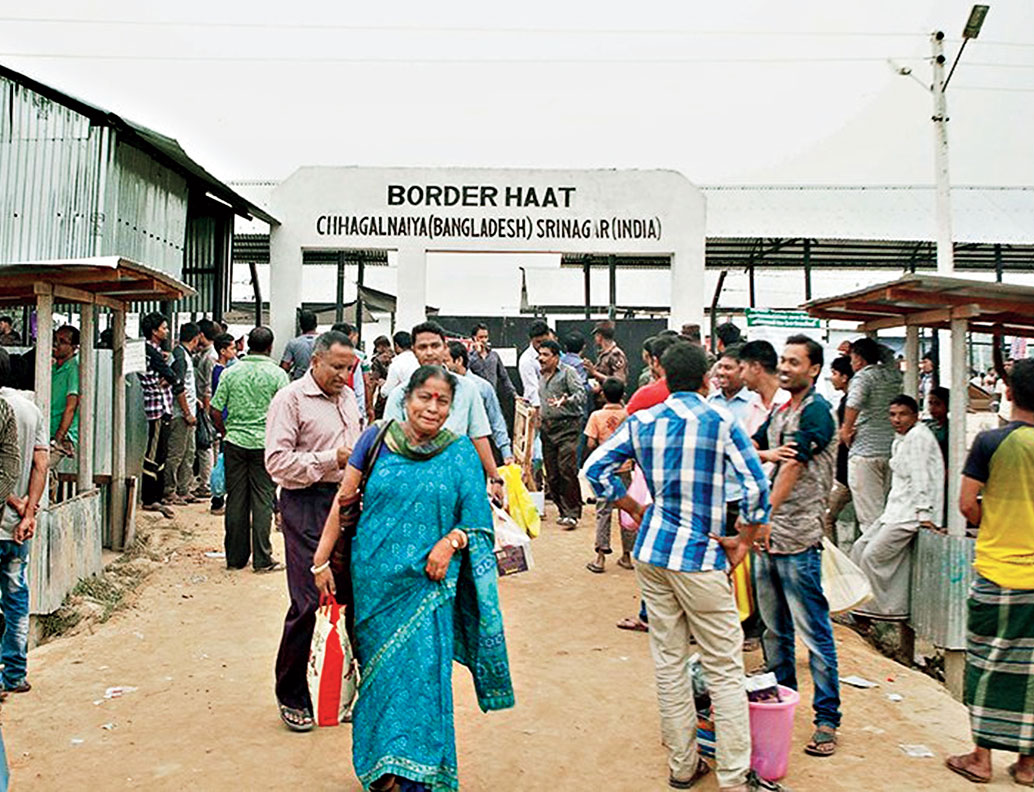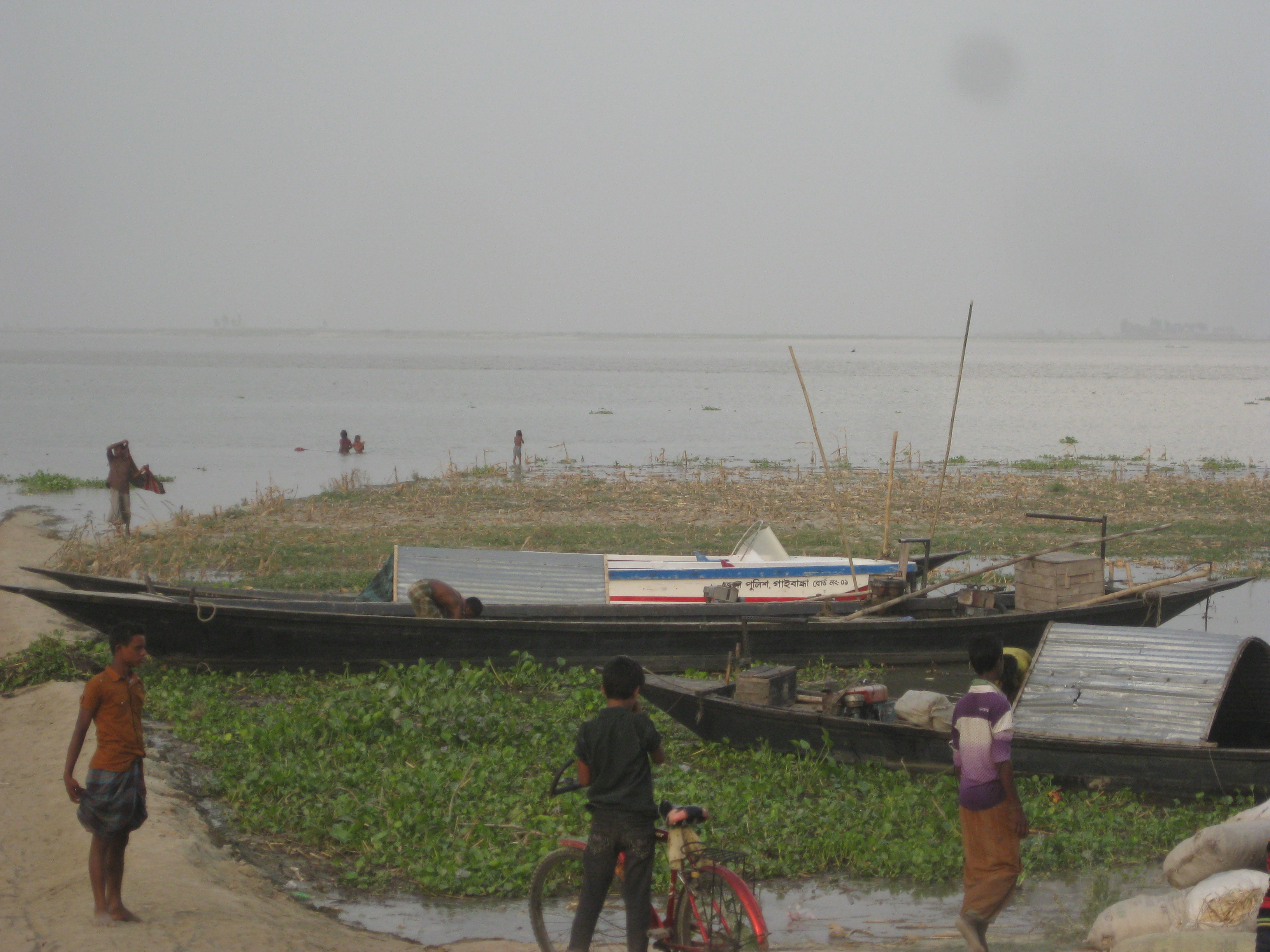In my last column, I argued for visa-free entry for Bangladeshis into India. It may sound shocking to some Indians. But it is perfectly possible even for the Indian government to give visas liberally; it would then at least have a record of the migration. And if Bangladeshis could work legally in India, they would move freely across the border and become ambassadors of India. Instead of assuming names like Rajesh and Rupa, they would give their real names. They would open bank accounts in India, save money, and use it to take goods and services across to Bangladesh. Just now, the only Bangladeshis who come to India are unskilled workers who cross the border informally, and a handful of rich people who come to Calcutta for medical treatment. If the government were more liberal with visas, other Bangladeshis would also visit India and would develop more economic and social contacts.
One consequence of the Indian government’s allergy to illegal immigration is that although there are many rivers — distributaries of the two great rivers, Ganges and Brahmaputra — criss-crossing India and Bangladesh, there is little river-borne trade. Whilst the government of India has been unrealistically intent on controlling movement of people and goods across the land border, it has been more realistic about movement in inland waters. The two governments have signed successive protocols on inland water transit and trade since 2003.
This, however, is local traffic. There would be a radical change in the relationship if both countries could use each other’s ports. India would like to use Mongla and Chittagong ports to give its landlocked Northeast access to the sea. When it asked for this, Bangladesh, in turn, asked to be allowed to use Haldia, Paradip and Visakhapatnam. The two cabinets have approved the agreement, but it is still to be finalised. Bangladesh got access to Calcutta port in April; but Calcutta is too shallow for ocean trade. Both sides are being stupid. Port traffic increases the income of a country; it does not matter which country the goods belong to. Germany and Italy do not discriminate against shipments from Switzerland; South Africa does not ban shipments from Zimbabwe from its ports. Bangladesh simply cannot have a deepwater port; nor can West Bengal. But both can prosper if they can use Haldia, Paradip or Vizag.
Jute and jute goods are major exports of Bangladesh; India also produces them. India imports jute from Bangladesh when the Indian crop is low, and stops imports when domestic supply is sufficient. It imposes import restrictions in great detail on jute products. What is remarkable is how arbitrarily the Indian commerce ministry imposes and removes trade restrictions, without notice or consultation. The minute changes it makes suggest that it is under strong influence of Indian jute manufacturers. The government does not see that frequent, arbitrary and unanticipated changes in trade restrictions dissuade people from trading and attract people who are prepared to make a quick buck.
Agricultural goods that are procured by the government for public distribution, such as foodgrains and sugar, must be stored in domestically produced gunny bags, so Bangladeshi bags are ineligible. A gunny bag is a gunny bag; there is no way of distinguishing an Indian gunny bag from a Bangladeshi one. India has sufficient foreign exchange to buy Bangladeshi gunny bags; if it buys some, Bangladesh will buy more Indian goods. If gunny bags were bought by open tender, their cost would be minimised, and Indian bag manufacturers would be forced to become competitive. The commerce ministry’s restrictions are trivial; the only objectives they serve are to make perfectly normal transactions illegal and give the commerce ministry something to do.
Bangladesh is the world’s third- largest garment exporter; garments account for 80 per cent of its exports. The garments it produces have a substantial content of Indian yarn and fabric. Although India has largely freed its imports from non-tariff barriers, it uses them to restrict other countries’ access to the Indian market when it gives them duty concessions. It has kept garments on the negative list, which means that the commerce ministry can use them to bargain with other countries on mutual trade liberalisation, or to do favours. After the introduction of goods and services tax, Bangladeshi garments have had duty-free access to the Indian market, and have taken a small share in it. But for them to be able to compete fairly with Indian garments, there has to be assurance of long-run duty-free access to the Indian market.
Very recently, India has announced that it will give Bangladeshi students three-year visas to study in India. This is a good idea, but it will eventually raise the same problem that Indian students face in the United States of America: after graduation, they have to get an employment visa if they want to stay on, which the Trump administration is reluctant to give. The Indian administration will not be reluctant; it will be adamant in refusing work visas. That too would be stupid; more educated Bangladeshis working in India will send more money home, which will be used to import Indian goods and services. The US is popular in India because it is relatively liberal in letting young Indians work; Britain is unpopular because it is illiberal. The same applies to India; it can make friends abroad by letting people from neighbouring countries work in India. The foreign exchange costs are negligible because all our neighbours are small; the goodwill earned is substantial and matters when India and China are competing for friends.
India is helping Bangladesh build a nuclear power plant in Rooppur. Some days ago, Hasina Wajed and Narendra Modi got together on video and inaugurated the construction of two rail links between the two countries — one a new one and the other a long-defunct one. Normally they would take decades, but if Piyush Goyal remains railways minister after the general elections, they may be completed fairly quickly. Rail links are useful; but road and water links are much cheaper and easier to use.
This brief survey of Indo-Bangladeshi commercial relations has avoided the anaemic generalisations which studies commissioned by the two governments indulge in and concentrated on the serious current problems. As I mentioned at the beginning, the relationship between the two countries is undeveloped and capable of considerable development. That will occur only if the two sides forget reciprocity and take bold, generous, unilateral steps. Unilateral favours do not give anything away; they add to the total transactions and bring the two countries closer. What I would suggest is that India throws all the finicky agreements with Bangladesh in the waste paper basket and allows free access to India to Bangladeshi people, goods and services and that the Reserve Bank of India lets Indian banks open branches in Bangladesh and Bangladeshi banks open branches in India. Closer relations between the two countries are in our interests. This applies not just to Bangladesh but also to Pakistan, Myanmar and China. China, in particular, is full of superb entrepreneurs who would produce goods in and trade with India if allowed. Hostility with China gives our government much to occupy itself with, but closer economic ties with China would give much greater benefit to our people.












